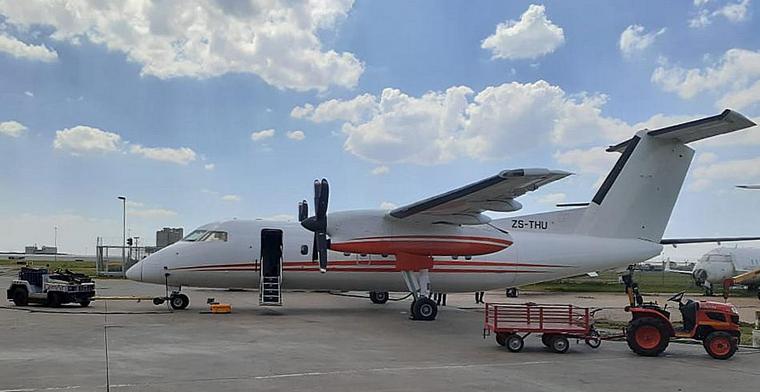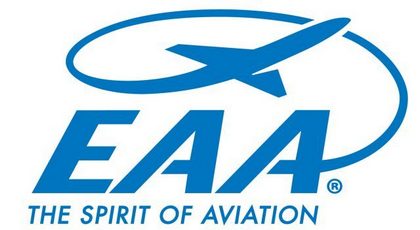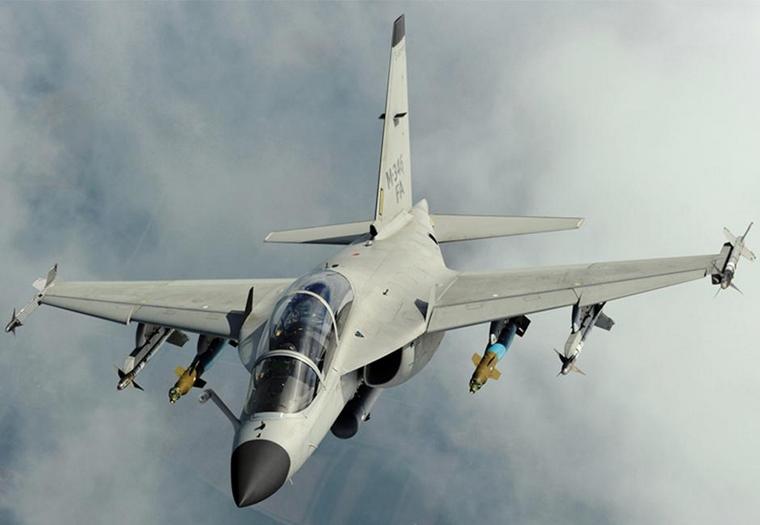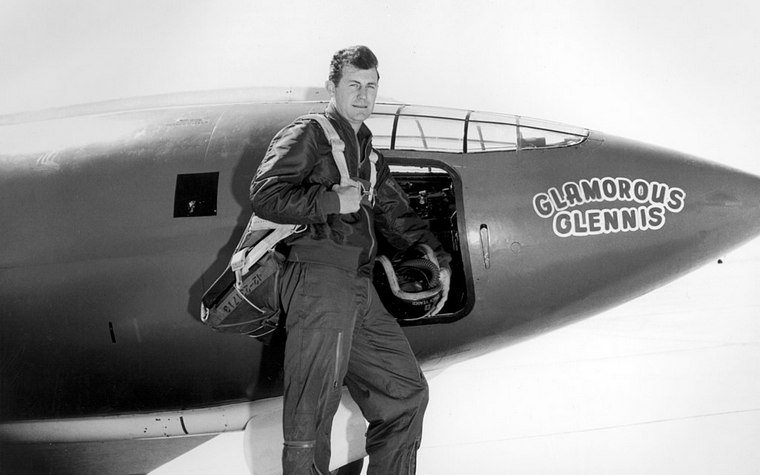





































MIDWEEK UPDATE 13 JANUARY 2021




COVID 19 REGULATIONS, INITIATIVES AND AEROCLUB NEWS
AERO CLUB MEMBERSHIP RENEWAL TIME
Dear Aero Club Member,
It is the Aero Club and Members Association renewal time for the year 2021. Please note that we had a payment system glitch related to credit card payments that has been resolved as of 7 Dec 2020. Many thanks for your continued support for recreational aviation in South Africa. Although the current year was supposed to be a significant milestone for the Aero Club as our centenary year, we were not able to celebrate as planned. We were at least very active in securing our ability to fly during the lockdown period and made significant progress in engaging with the regulator. We will continue to build on this relationship to improve the overall service standards and work on regulatory improvements.
To renew your membership or join the Aero Club and its sections go to www.aeroclub.co.za, where you can use the Aeropay System, or you can pay via EFT. The Aero Club fee has seen a small nominal increase (from a previous reduction applied for 2020) and section fees have either remained the same or have also applied nominal increases. We continue to manage our budgeted finances to apply our resources to facilitate advocacy matters with the regulator with collaborative support from the sections. Please review and renew your membership as per the payment methods noted. If you have any difficulties, please contact the Aero Club office by email or phone as given below: - Sandra and Charne are ready to assist.
Tel : 011 082 1100
Tel: 011 082 1100
Fax: 086 635 3755
E-mail: office@aeroclub.org.za
www.aeroclub.co.za



Vote now for January week two finalists
Vote for JanW2.1

Vote for JanW2.2
Entering your aviation related photo is easy and simple. All images must be emailed to pilotspost@gmail.com with the following detail included:
Your name,
Email address,
Telephone number,
Where the photo was taken,
Phone used,
A theme name of the photo (Optional).
Due to the large amount of entries we expect, Pilot's Post will not acknowledge your entry!!
Entry Rules:
1. When entering the competition and by sending your photo to Pilot's Post, you explicitly grant the publication of your submitted photograph at Pilot's Post team's discretion without any remuneration or obligation to you.
2. Submitted photos must be resized to be less than 1 megabyte in size. If full-size photographs are required, the Pilot's Post team will request them from you.
3. Only photos taken with cell phones will be accepted.
3. All submissions must have an aviation theme.
4. Photo submissions may be cropped and / or resized only. Any other form of photo alteration or manipulation is not allowed and will be disqualified.
5. You may submit up to three entries per week.
Judging:
1. The Pilot's Post team will select the 2 best photos submitted every week and add them into our "Midweek Update" published every Thursday morning, where our readers will then cast their votes by simply clicking the link below the photo of their choice.
2. At the end of each month, a complete article will be published on Pilot's Post to include the weekly photo submissions with the most reader votes. Our readers will then again have the opportunity to cast their votes by simply clicking the link below the photo of their choice. The photo with the highest number of votes will then be judged the Winner of the Month.
3. A prize of a set of Chock Norris personalised Aircraft Chocks with leather storage bag valued at R500
and
a voucher from the Pilot Shop valued at R200.00 will be awarded to each monthly winner
and
a soft cover copy of the Aero Club of South Africa's Centenary Yearbook valued at R300.00 sponsored by Chapter 322 of the EAA of SA
Eligibility:
The Pilot's Post "Chock Norris 2020" aviation related photo competition is only open to photographers resident in South Africa as our prizes are not transferable and can only be redeemed in South Africa.

EAA CHAPTER 322
With our MACH program (Member Awards for Chapter Help), your membership could win you a trip to Oshkosh!
Click on the link below today to renew or join!
www.eaa.org.za/membership/membership-form
or for EAA membership information go to
www.eaa.org.za


The following events will to take place under the rules controlling the number of people congregating together and are therefore not open to the general public.
13 JANUARY
EAA Chapter 322 monthly meeting via ZOOM. The meeting will be joined via ZOOM by Chapter 932 Galt Airfield, Chicago, USA.
Contact Neil Bowden E-mail: neil1@telkomsa.net Cell: 084 674 5674
30 JANUARY 2021
SAPFA Rand Airport challenge
Contact Frank Eckard E-mail: frank.eckard@mweb.co.za Cell: 083 269 1516
30 JANUARY 2021
SAPFA AGM at Rand Airport after the rally
Contact Rob Jonkers E-mail: rob@aerosud.co.za cell: 082 804 7032
30 & 31 JANUARY 2021
Sport Aerobatic Club Gauteng Regionals Vereeniging Airfield
Contact Annie Boon E-mail: chunge@mweb.co.za

3 FEBRUARY
EAA Chapter 322 monthly meeting virtual and Dicky Fritz MOTH hall. Contact Neil Bowden E-mail: neil1@telkomsa.net Cell: 084 674 5674
5 & 6 FEBRUARY
SAPFA Witbank Speed Rally at Witbank Airfield
Contact Jonty Esser E-mail: jonty@promptroofing.co.za Cell: 082 855 9435
27 FEBRUARY
EAA Chapter 322 drive-in or fly-in night at Jack Taylor Krugersdorp. We will show a movie on a giant screen on the airfield. Members can drive in or fly in (camp that night on the field). The planned movie is 'Flying the Feathered Edge' with Bob Hoover.
Contact Neil Bowden E-mail: neil1@telkomsa.net Cell: 084 674 5674


FLIGHT DESIGN CTLS AND CTLSi EASA CERTIFIED
FLIGHT DESIGN general aviation is excited to announce that as of December 19th, the CTLS series is available as a full EASA certified aircraft. The EASA certification is recognized in most countries allowing the popular CTLS(i) to be used for flight training for a pilot's license in many new countries.
The certification of the aircraft was recently amended to include many upgrades, among which are the modern Dynon SkyView HDX and the Dynon autopilot. The aircraft is now available with the ROTAX 912 iSc Sport engine, which required new a new noise certification test as well. During the process, acceptance flights were performed by EASA staff near EASA headquarters in Cologne, Germany.
"We are very pleased to see the acceptance of the CTLS and CTLSi as EASA CS-LSA certified products" said Sven Lindig, it shows the value of the CTLS design and the great work being done by our different businesses within FLIGHT DESIGN general aviation, said Sven. This award was a result of work done by the FLIGHT DESIGN team here in Eisenach, FLIGHT DESIGN Ukraine and the EASA and Czech CAA approved Production Organization, FLIGHT DESIGN CZ, located in Sumperk, Czech Republic."

MAHEPA ANNOUNCES: HYDROGEN FUEL CELL DRIVEN HY4 HAS FLOWN

Despite the COVID19 repercussions and with all safety precautions in place, the Hy4 hydrogen powered hybrid-electric aircraft successfully flew from Maribor airport, in Slovenia, achieving a landmark milestone for the MAHEPA project and for the future of clean aviation.
With the renovated and optimized fuel cell system technology developed in MAHEPA and in strong cooperation with multiple national projects, the Hy4 became the most powerful hydrogen fuel cell driven aircraft ever made, directly flying into the next era of air transport. First qualification tests and data dissemination show that the full redundant Hy4 powertrain architecture allows an upscaling of the modular technology.
MAHEPA consortium of Pipistrel Vertical Solutions, Compact Dynamics, DLR, H2Fly, Politecnico di Milano, TU Delft, University of Maribor and University of Ulm is again demonstrating a pioneering direction towards cleaner air transport in Europe, which will be supported by novel technologies developed in the project.

KEEPING EUROFIGHTER AT THE LEADING EDGE OF COMBAT AIRCRAFT TECHNOLOGY
With more than 500 Eurofighters delivered to date and 500,000-plus flight hours logged worldwide, this swing-role combat aircraft's future is brighter than ever - backed by a slate of new-generation enhancements currently under development and planned in the years to come.
Additionally, a Eurofighter order is expected from Spain, while the aircraft has been proposed for procurements in Switzerland, Finland, Poland and Canada.
"Eurofighter will remain at the forefront of our customers' fleets for decades to come."
Kurt Rossner, Airbus Head of Combat Aircraft Systems and Chairman of the Eurofighter GmbH Supervisory Board
Ongoing upgrades include the integration of additional weapons system capabilities - as achieved on Royal Air Force Eurofighters for the UK and under implementation for the German Air Force. This includes stepping up from a mechanically-scanned radar to a more modern electronically-scanned (E-Scan) sensor. E-Scan adds an advanced antenna to provide an unrivalled field of radar coverage, along with multi-target tracking, improved missile guidance and more.
Other planned enhancements will involve an adapted avionics structure, including the latest state-of-the-art hardware and software to keep Eurofighter at the leading edge of combat aircraft technology. In parallel, this development stream will be used in risk reduction for the Next Generation Weapon System, providing a bridge for Europe's Future Combat Air System (FCAS) and placing Eurofighter as one of its main components.
"Eurofighter is about to enter its next era and will remain at the forefront of our customers' fleets for decades to come," explained Kurt Rossner, Airbus Head of Combat Aircraft Systems and Chairman of the Eurofighter GmbH Supervisory Board.

FIVE-BLADED AIRBUS H145 RECEIVES TCCA TYPE CERTIFICATION
Airbus's H145 is particularly suited to high-altitude environments. It includes a high performance 4-axis autopilot, increasing safety and reducing pilot workload.
"The enhanced performance capabilities of the new five-bladed H145 will help to further mission success for our customers in Canada and we stand ready to support its upcoming entry into service," said Dwayne Charette, President and COO of Airbus Helicopters Canada. "We are grateful to the team at Transport Canada for enabling us to meet this important milestone, while mitigating various challenges linked to the global pandemic, we all continue to face."
This type certification covers the full range of capabilities, including single-pilot instrument flight rules (IFR) and single engine operations (Cat.A/VTOL), along with night vision goggle capability. This newest version of the H145 family adds a new, innovative five-bladed rotor system to the multi-mission H145, increasing the useful load of the helicopter by 330 lbs (150 kg). The simplicity of the new bearing less main rotor design will also simplify maintenance operations, further improving the benchmark serviceability and reliability of the H145, while improving ride comfort for both passengers and crew.
Particularly suited to high-altitude environments, the H145 set its skids down during a test campaign on the Aconcagua, the highest mountain in the Southern hemisphere, further proving its capabilities even in harsh conditions. Powered by two Safran Arriel 2E engines, the H145 is equipped with full authority digital engine control (FADEC) and Airbus's own Helionix digital avionics suite. It includes a high performance 4-axis autopilot, increasing safety and reducing pilot workload.

Kaman Air Vehicles, a division of Kaman Corporation, announced that the Agencia Nacional de Aviação Civil (ANAC) in Brazil has issued the Type Certificate for the Kaman K-1200 K-MAX helicopter. Kaman has been marketing the K-MAX helicopter to various Brazilian operators, power line, oil and gas firms and engineering companies over the past two years. This certification clears the path for K-MAX operations in Brazil.
The K-MAX has also begun operations in China following certification from the Civil Aviation Administration of China.
The K-MAX is a rugged, low-maintenance aircraft that features a counter-rotating rotor system and is optimized for cyclical, external load operations and is ideally suited for operations throughout the country of Brazil," said Roger Wassmuth, senior director of business development. "We believe the K-MAX offers a cost-effective value proposition for infrastructure building of much needed power lines."
"Kaman's engineering team, working in conjunction with the FAA Boston Office and the ANAC offices, worked diligently to provide technical and operational information on the K-MAX and we are pleased that this important milestone has been realized," said Darlene Smith, vice president and general manager of the Kaman Air Vehicles division.
The K-MAX is a rugged, low-maintenance aircraft that features a counter-rotating rotor system and is optimized for repetitive external load operations. The aircraft can lift up to 6,000 pounds (2,722 kg) with unmatched performance in hot and high conditions.

ISRAEL, GREECE SIGN $1.7 BILLION DEAL FOR AIR FORCE TRAINING

Earlier this month Israel and Greece released a statement that involves a government-to-government agreement, worth USD 1,68 billion that includes the procurement of ten Leonardo M346 Master jet trainers for the Hellenic Air Force (HAF, Greek Air Force) and the establishment of a flight school modelled on the Heyl Ha'Avir (IAF, Israeli Air Force) flight academy.
The Israeli participated in an international tender in which CAE also participated. The Israeli winning bid was approved by the Greek government. The result is the largest defence procurement agreement between the two countries to date.
In due time, the Directorate for International Defence Cooperation (SIBAT) in the Israeli Ministry of Defence Ministry and Elbit Systems Ltd. will sign the agreement to establish the Greek flight school. The Israeli and Greek flight academies will see a close cooperation in the near future.
Currently, the IAF is using the T-6 Texan II and the M346, with the Israeli name Lavi, from Hatzerim air base (Israel). The Greek operate the T-6 Texan II as well, but also fly the eldery Grumman T-2C Buckeye, both from Kalamata air base (Greece). The Buckeye will be replaced by the M346.

BELL AND THE CITY OF FORT WORTH CELEBRATE BELL 505 DELIVERY AND 70-YEAR LEGACY
Bell Textron Inc., a Textron Inc. (NYSE:TXT) company, announced today the delivery of a Bell 505 to the Fort Worth Police Department. Bell executives and city officials celebrated this delivery at the police department's hangar at Meacham Airport to mark a 70-year relationship between Bell and Fort Worth.
"Bell is proud to continue the long legacy of supporting the Fort Worth Police Department and public safety initiatives in our growing community," said Mitch Snyder, president and CEO. "Fort Worth has shaped Bell as a company since our move here in 1951, providing an environment accepting of new ideas and technology that remains vital to our future. We look forward to watching the Fort Worth PD and the Bell 505 serve the citizens of Fort Worth."
In 1951, Lawrence D. Bell broke ground in Fort Worth on Bell Aircraft Corporation's helicopter division, to be called Bell Helicopter. More than 70 years later, Bell has completed several consolidation and modernization efforts as well as establishing new facilities in Fort Worth to support advanced manufacturing and Bell's Commercial Business operations. With more than 4,200 employees, Bell continues to positively bring long-term economic growth and jobs to North Texas.
"The City of Fort Worth and Bell have an incredible, long-standing partnership, and I am thrilled to see this continue to positively impact our community," said Mayor Betsy Price. "Fort Worth Police Department's new Bell 505 will be a great asset to the community as we continue to prioritize public safety for all residents using top of the line technology. The City looks forward to growing our partnership with Bell, as it is critical that we support local businesses and uplift the innovative work being done in our own backyard."
The Bell 505 was introduced in 2014 and certified by the Federal Aviation Administration (FAA) in 2017. There are now more than 300 Bell 505s operating in more than 55 countries on six continents, surpassing 50,000 total fleet flight hours. With a speed of 125 knots (232 km/h) and useful load of 1,500 pounds (680 kg), the Bell 505 is designed to be easy to fly while providing significant value to the operator and best-in-class cabin visibility. The customer-driven design of the aircraft places safety, performance and affordability at the forefront, blending proven systems with advanced technology and a sleek, modern design.

SAAB RECEIVES ORDER FOR DEFINITION OF FUTURE OPTIONS FOR SWEDEN'S GRIPEN C/D FIGHTERS
"Gripen C/D is the backbone of the Swedish Air Force and will be for many years to come. The result of the work will be that the customer has the ability to take different directions depending on their future needs. Saab's expertise in developing advanced fighter technology gives Sweden the means to decide how Gripen C/D remains a formidable frontline fighter in the 2030s," says Jonas Hjelm, Senior Vice President and head of Saab business area Aeronautics.
Gripen is in service with a number of air forces including Sweden, the Czech Republic, Hungary, South Africa and Thailand. The UK Empire Test Pilots' School (ETPS) is operating Gripen as its platform for test pilot training. Sweden and Brazil have also respectively ordered 60 and 36 new Gripen fighter aircraft.

U.S. Marines are now preparing to fly, maintain and sustain the CH-53K heavy lift helicopter, which will enable them to safely complete longer-range missions in harsher environments compared to the current fleet of aircraft. The suite of training devices at Marine Corps Air Station (MCAS) New River in Jacksonville, North Carolina were recently declared Ready for Training.

SOUTH AFRICA
GEORGE AIRPORT

A FlySAFAir Boeing 737-400 aircraft with registration ZS-OAF departed Cape Town International on a scheduled domestic flight to East London Aerodrome (FAEL). While the aircraft was climbing through 32 920 feet above mean sea level to a cruising altitude of 33 000 feet, the crew broadcast a "Cabin Altitude Warning followed by a Mayday, requesting an emergency descent". The aircraft commenced with an emergency descent to 10 000 feet. Once the crew had levelled off at flight level (FL) 100, the area controller who had the aircraft on primary surveillance radar asked the crew if they will be returning to FACT, but they opted to divert to George Aerodrome (FAGG) where they landed safely on Runway 29.
India, Suratgarh Air Force Station: An Indian Air Force MiG-21 Bison crashed due to a technical malfunction shortly after take-off from Suratgarh Air Force Station (state of Rajasthan). Despite the tough conditions during the night time training sortie, the pilot managed to steer the Soviet era fighter away from buildings and ejected once he was sure the Migoyan Gurevich would not cause any more harm. At that point he decided to eject and landed safely.

USA, 23 km (14.4 mls) SE of Pine Grove, OR: A Cessna 560 Citation V operated by SX Transport LLC with two on board was destroyed when it impacted the terrain in the Mutton Mountains area southeast of Pine Grove, Oregon. There were no survivors. The aircraft departed Troutdale Airport, Oregon at 22:08 UTC and reached FL310 twenty minutes later. At that point, ADS-B records show that the aircraft began a descending right hand turn that ended in the aircraft spiralling down until it impacted terrain.
USA, near Farmingdale-Republic Airport, Long Island, NY: A Cessna 421B Golden Eagle II operated by 850 Atlantic Collision Inc with only the pilot on board following a reported loss of engine power force landed to roadway terrain by the former Old Bethpage waste disposal complex, near Republic Airport (FRG/KFRG), Long Island, New York. The airplane sustained substantial damage and the sole pilot onboard received moderate injuries.

Iceland, Keflavik: A Delta Airlines Airbus A330-300 on a flight from New York JFK,NY (USA) to Paris Charles de Gaulle (France), was enroute at FL380 about 700nm south-south-west of Keflavik (Iceland) when the crew decided to divert to Keflavik after reporting a problem with the #1 engine. The crew requested to descend to FL320 and set course for Keflavik and the turn to Keflavik was approved by Oceanic Control within a minute. However, the request to descent took more than 15 minutes due to a lot of traffic around that needed to be moved out, the aircraft continued to maintain FL380 in the meantime. Finally, the aircraft descended to FL290 and landed safely on Keflavik's runway 01 about 2 hours after the decision to divert.
Indonesia, Pagamba Airstrip, Papua: A Quest Kodiak 100 operated by Mission Aviation Fellowship (MAF) was destroyed by fire while parked at the airstrip when it allegedly was set on fire by members of the West Papua National Liberation Army.
Taiwan, near Saijia Village, Sandimen Township: A Flight Design CTLS with two occupants on a training flight was destroyed when it crashed under unknown circumstances in a mountainous area near Saijia Village, Sandimen Township, Pingtung County, Taiwan. Both the trainer and trainee onboard died.
USA, Los Angeles, CA: A Kalitta Air Boeing 767-300 freighter with three crew on board from San Francisco to Los Angeles completed a seemingly uneventful flight with a landing at Los Angeles. The FAA reported however: "Aircraft was discovered having damage to the left-wing tip, Los Angeles, CA." The cause of damage was unknown. The aircraft remained on the ground for about 29 hours before returning to service.
Russia, near Gostillitsy Airfield, Leningrad: A Piper PA-28-180 Cherokee B and a Cessna 150 were involved in a mid-air collision near Gostilitsy Airfield (ULSG), Lomonosovsky District, Leningrad Oblast, Russia. The Piper came to the rest in a snow field and three of the four occupants were fatally injured. The Cessna sustained minor damage to the nose landing gear and landed safely and the sole pilot onboard was not injured. It appears that both planes were just airborne when the collision happened.

USA, West of Oxnard Airport, CA: A Lancair 235 with one occupant. Following a loss of engine power force landed to roadway terrain in Oxnard, Ventura County, California, during an attempted return to the point of departure at Oxnard Airport (OXR/KOXR). The sole pilot onboard was not injured during the incident and the airplane was not damaged.


5 JANUARY 1949

Charles "Chuck" Yeager using a Bell X-1 carried out the only conventional (runway) take off performed during the X-1 program, reaching 23,000 ft (7,000 m) in 90 seconds.
As the design might have led to a fighter, it was intended to take off from the ground, but the end of the war made the B-29 Superfortress capable to carry it into the air.

www.youtube.com/channel/UCCuRVZAGodT6sztTeXBGeMw
and subscribe to our YouTube channel

 |
 |
 Copyright © 2024 Pilot's Post PTY Ltd
The information, views and opinions by the authors contributing to Pilot’s Post are not necessarily those of the editor or other writers at Pilot’s Post.
Copyright © 2024 Pilot's Post PTY Ltd
The information, views and opinions by the authors contributing to Pilot’s Post are not necessarily those of the editor or other writers at Pilot’s Post.